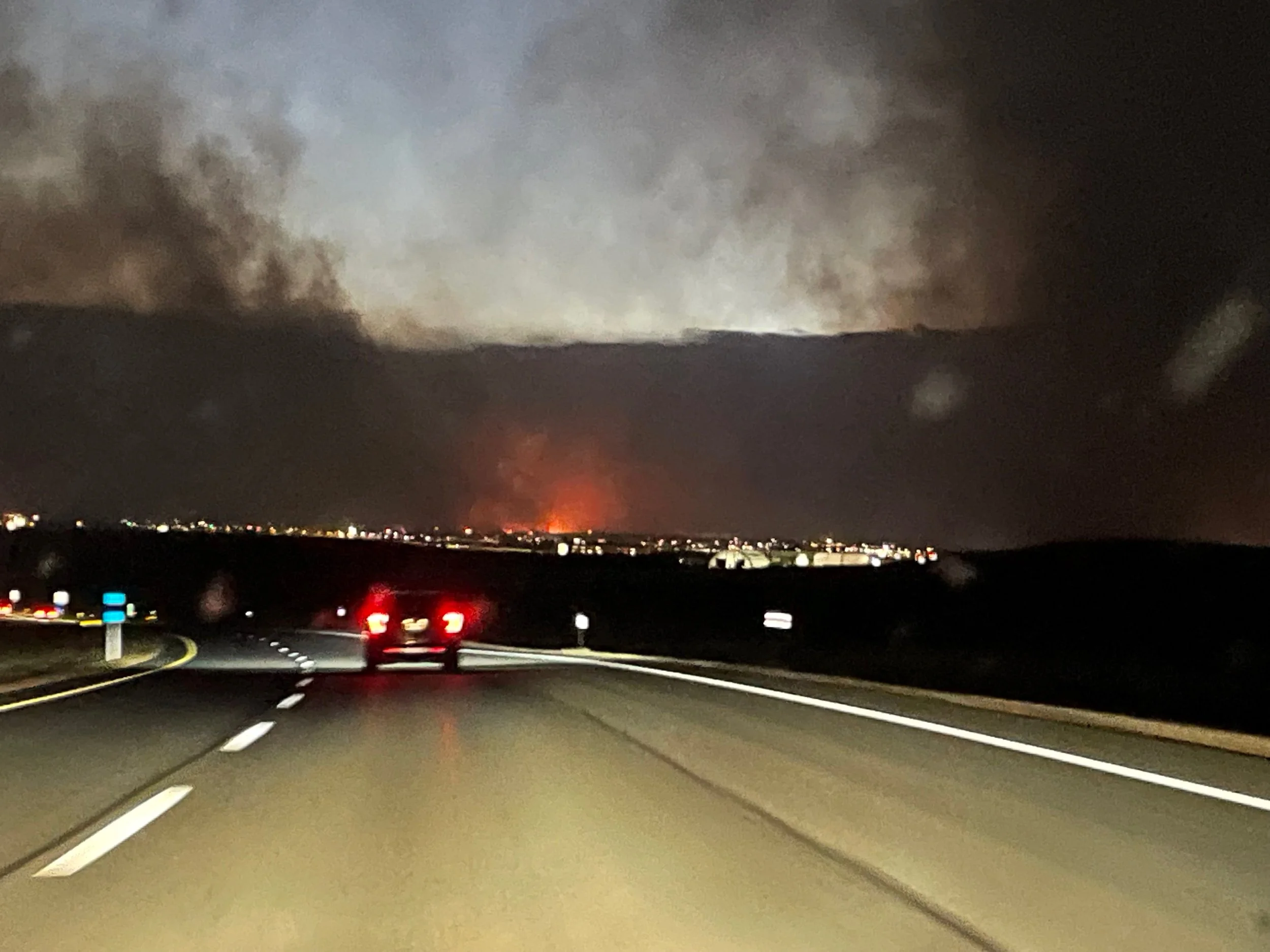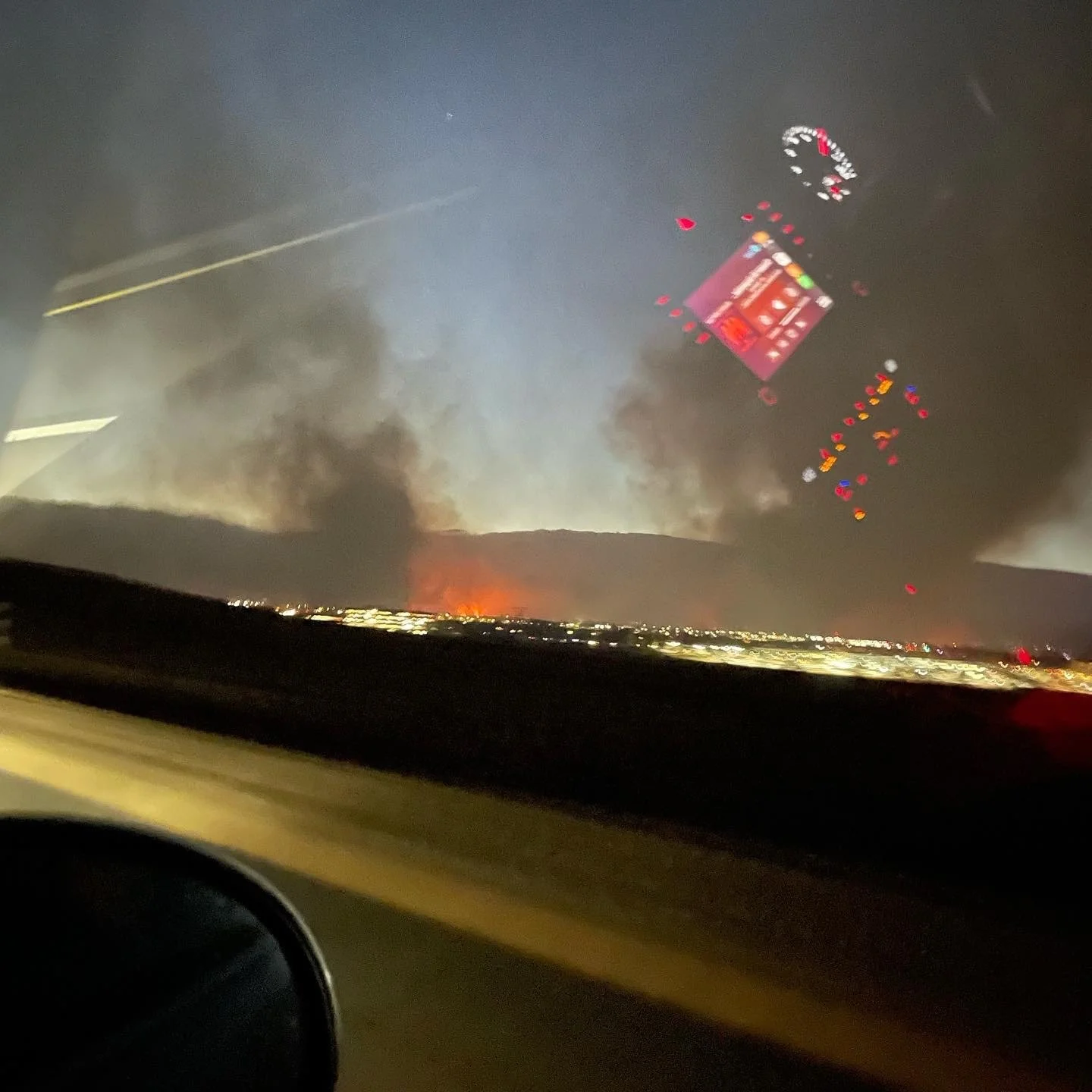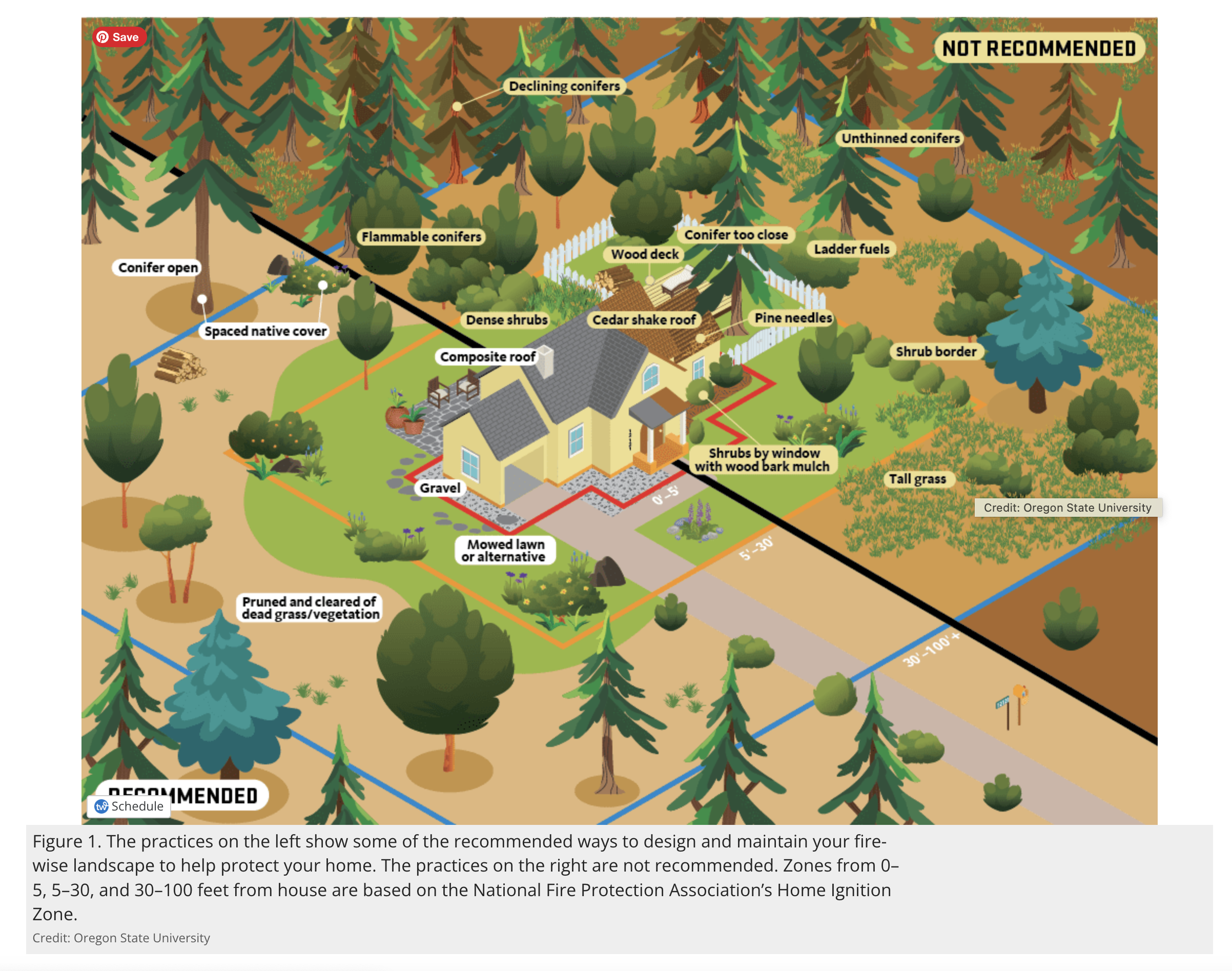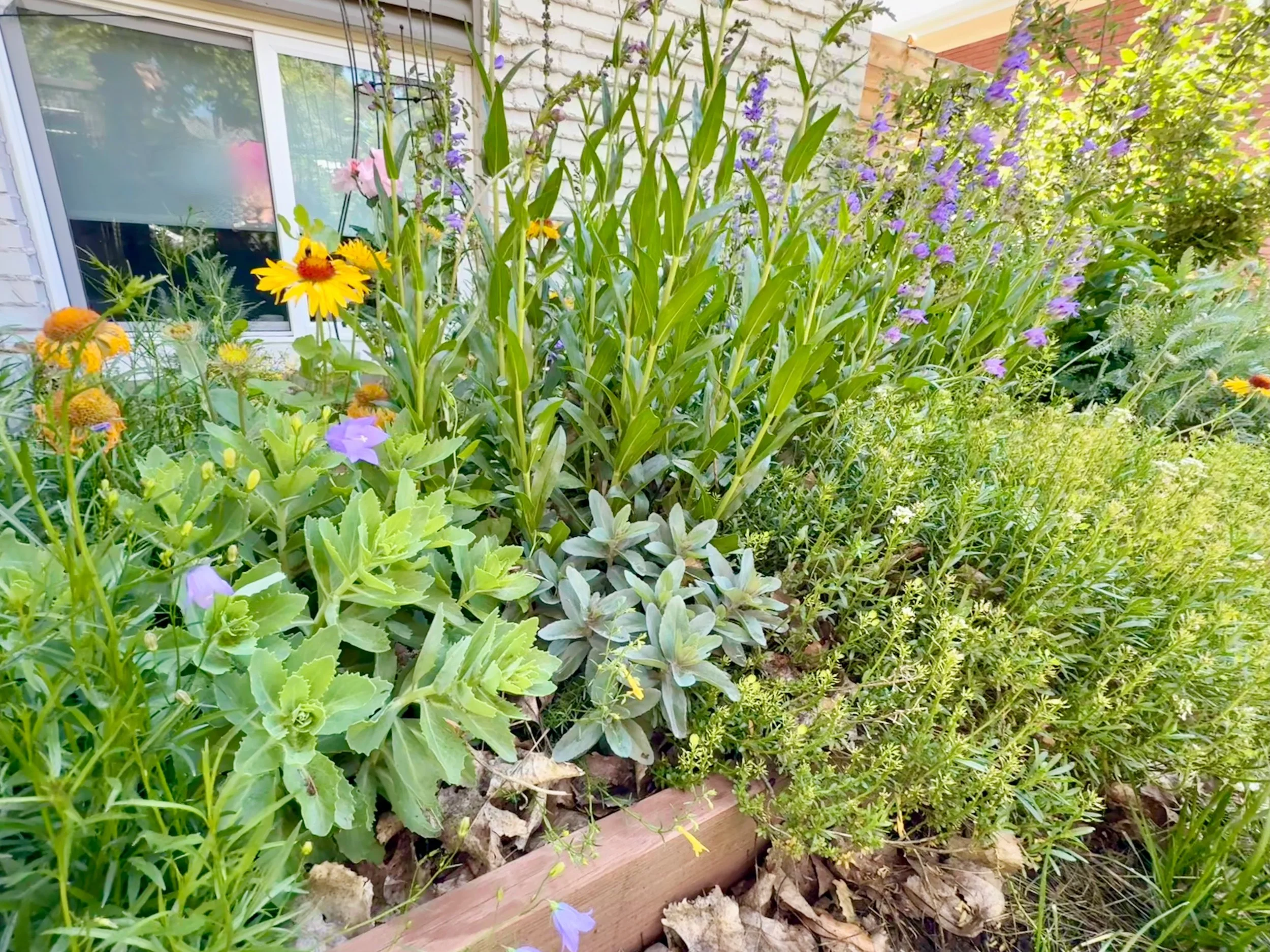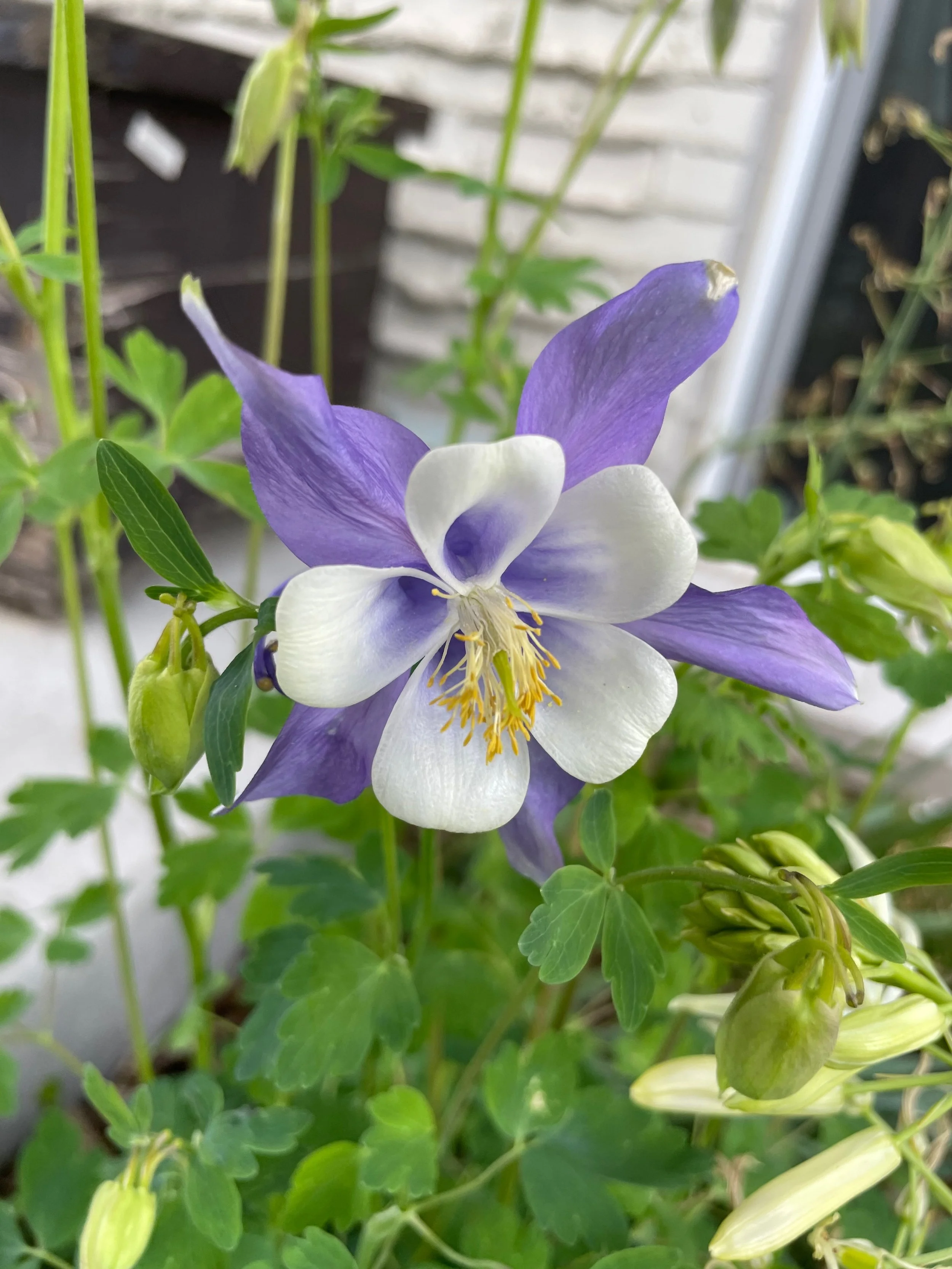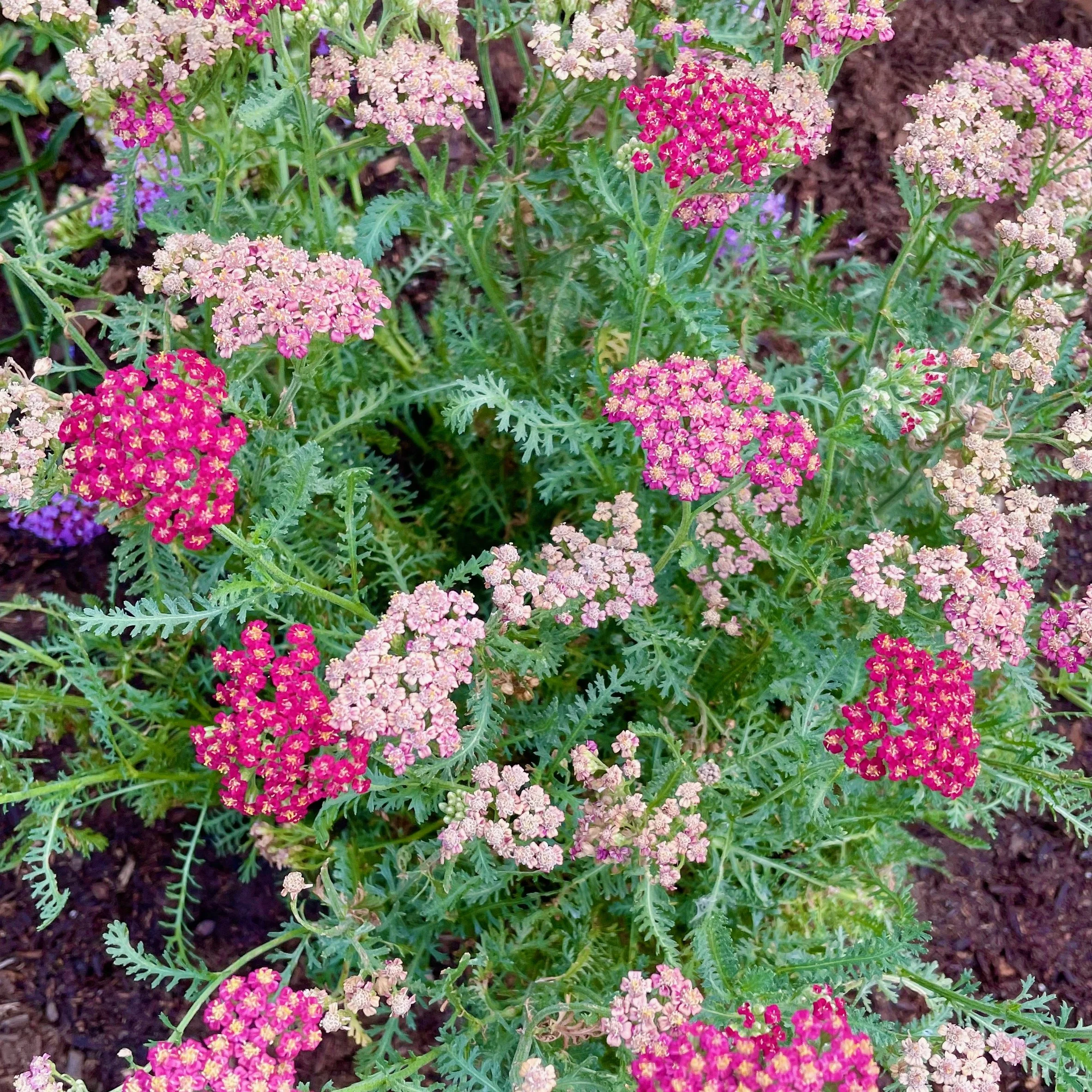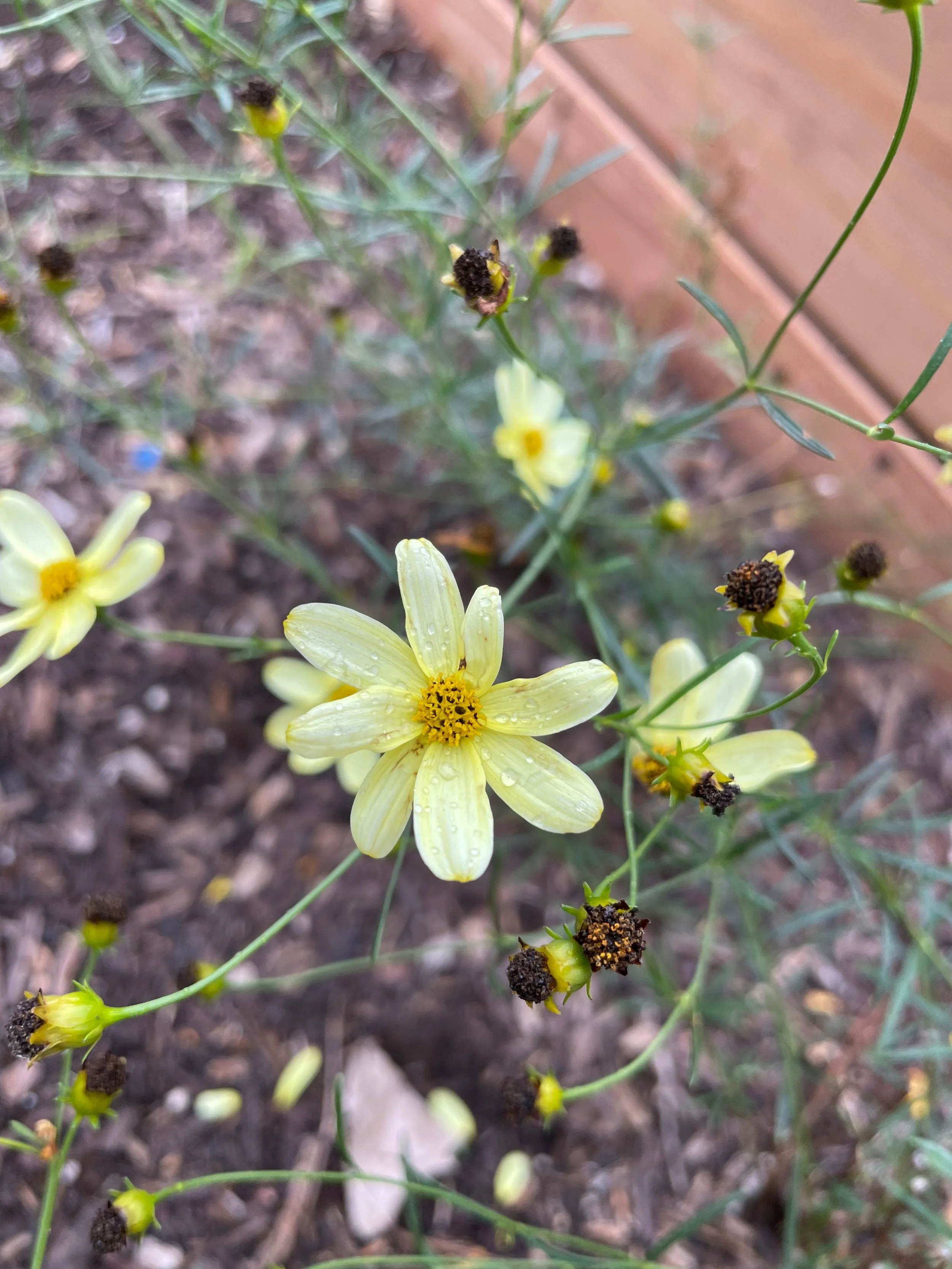Firewise Gardening Resources for Gardeners and Homeowners
December 30, 2021. My family was driving home from a holiday season in Dallas. We stopped for gas one last time in Colorado Springs, and I popped on Facebook, as you do. There was a notice about a fire. In Boulder. In December. We got back on the road – and not much later we could see smoke. I checked the map. "I think we need to take the tollway – traffic looks bad through Denver," I told my husband. Clouds of black smoke were visible on the horizon – and kept growing. And growing.
By the time we got to our exit, the fire itself was visible – and it was clear this wasn't just a wildfire. It was much, much worse.
We spent a harrowing night, ready to evacuate. Ours was going to be the next zone to evacuate – and fortunately, we didn't need to go. But we watched helplessly as friend after friend posted about their homes being destroyed – one after another – in the Marshall Fire. To be clear: this was a fire not through a mountain town. This fire tore through three suburban communities – Superior, Lafayette, and South Boulder – on the plains near Boulder, Colorado. I drive through this fire area every single day taking my child to school. It's where my Lowe's was located. And our dentist's office. And it is where many of our friends lived.
With a changing climate and population centers encroaching on wild, open spaces, wildfires are a reality in North America. Now more than ever before. And the Marshall Fire could happen anywhere. Just like it happened in LA in 2025 with the Palisades Fire. Or in Altadena in 2025 with the Eaton Fire. And the list goes on…
And as we think about a new and harrowing reality, it can be easy to feel helpless. However, there are things we can do today that can help to make our homes and our gardens less inviting to wildfire – potentially stopping the spread of the next Marshall Fire.
I am not a fire expert. But as a Colorado Master Gardener, I have attended multiple trainings in the last few years on this subject, and I have used what I have learned in my own gardening. So here are my ten tips as well as lots of expert resources for gardeners to consider as you think about making your home more firewise:
This diagram from Oregon State University is one of the best out there showing gardening in fire zones, but it is in a forest context — not suburban. Click the image for the source.
10 Tips for Fire‑Wise Landscaping
1. Divide & Plan in Zones
Think about your property in zones:
Zone 0: this is your house itself
Zone 1: 0-5 feet from your house
Zone 2: 5-30 feet
Zone 3: 30-100 feet
Zone 0 is your home itself. And the guidance is that nothing should be touching your home. No vines growing up the side of the house. No tree limbs overhanging your roof. You don't want anything that can invite a fire to spread to your house – or spread from your home to another home.
Those of us in the suburbs should be focused on choosing plants and plant materials that aren't as flammable within Zones 1 and 2. More on that in a few paragraphs. But think about how that 5 foot perimeter around your home – that is Zone 1. Out thirty feet: Zone 2.
Many suburban and urban homes won't have a Zone 3. Mine doesn't! So thinking about a defensible zone in a suburban context is a little different – and most resources out there show homes in forested areas – not neighborhoods. This is an evolving science.
This is also something to consider as a neighborhood. While you may only have Zone 1 and 2 – your neighbor may be your Zone 3. How do their plantings potentially affect your home?
Resource: FireWise Plant Materials
I have done a lot of work in the last few years to replant the areas close to my own home. To see what I have done, click the button below!
2. Use Low-Flammability Plants in Zones 1-2
There are NO "fireproof" plants. But there are plants that won't burn as quickly, won't spread fire as easily, and can help slow the growth of a fire. Choose plants with high moisture, low resin/oil, compact forms, and green stems.
According to the CSU FireWise Plant Materials fact sheet:
"Attributes that decrease flammability
Low oil or resin content
High moisture content
Soap, latex or pectin content
Compact growth form
Green stems
Drought tolerant
Attributes that increase flammability
High oil or resin content
Low moisture content
Tall growth
Open form
Fine wood (twiggy) stems
High water need"
Source: FireWise Plant Materials
3. Remove or Relocate Highly Flammable Plants
My next door neighbors have a huge hedge of very mature (and often very dry) Juniper in what would be my Zone 3. That hedge makes me worry. Juniper was a very common landscaping plant when our neighborhood was developed in the late 1950s and early 1960s, and there are a lot of homes around that still have large, mature Junipers. But Junipers are full of oil – and are highly flammable. The best thing to do is to take out those Juniper bushes – especially if they are in Zones 1-2.
This is not an exhaustive list, but plants you should consider removing from Zones 1-2 include:
Junipers
Russian Olive trees
Pines
Firs
Spruces
Gambel oak
Three-leaf sumac
Mountain mahogany
Eucalyptus
Ornamental grasses (especially non-natives)
While I can't ask my neighbor to remove their Junipers, I may bring it up in conversation some time… "You know, the recommendation now is to replace Junipers because they are so flammable. If you ever want help with that, don't hesitate to ask! That's a lot of work, and we would be happy to help you!"
I have done a lot of work in the last few years to replant the areas close to my own home. To see what I have done, click the button below!
4. Clear Dead Material Regularly
So this is a tricky one for me because there is value in leaf litter. I preach "leave the leaves" all fall – and leaving the leaves is having a positive environmental impact. People are seeing fireflies again, for example. But pulling leaves out of your Zone 1 beds – that's a smart move.
To Do List:
Don't chop and drop in Zone 1. Compost your waste here or use it elsewhere.
Don't stack firewood in Zone 1.
Keep your gutters clean! Shockingly – this is one of the simplest ways to keep your home safe.
Rake leaves and clear fallen sticks in Zone 1. You can even pile them up in Zone 2 or 3 to create compost or leaf mould. Just keep those piles nice and wet.
Clearing dry yard waste keeps ignition sources low.
Resource: Firewise Landscaping: The Basics
5. Prune Trees & Shrubs to Eliminate “Fire Ladders”
Remove lower branches of trees (up 6–10 ft or 10–20 ft) to prevent flames climbing into the canopy.
The Getty Villa grounds crew did this regularly before the Palisades Fire, and this alone may have saved a whole museum from destruction. It slowed the spread of the fire. Tree trunks burned, but the fire didn't get into the canopy around the museum. If you have trees on your property, the same principles might help you.
6. Use Fire‑Resistant Mulch and Ground Covers
The best mulch or groundcover is a living plant. That plant's moisture content will help to slow a fire. But if you need to apply a mulch, then considering flammability is important – particularly in Zone 1. The University of Arizona did a study on the flammability of mulch and ground covers. Their recommendation is to use non‑combustible materials like gravel or decomposed granite in Zone 1 and minimize mulch use close to structures.
What do I do? I use compost as a mulch which is water-retentive. And I cut down my vegetation in the fall and cover the entire bed with compost for the winter. It's a bit of a compromise, but it's one I can live with.
7. Maintain Green, Well‑Hydrated Plants
Keep vegetation healthy and green, especially within 30 feet of your home. Regular watering and drip systems help maintain moisture. A dry landscape is more likely to burn. So keep your plants hydrated and irrigated – even drought-tolerant landscaping. That doesn't mean overwatering. But living, vibrant plants are a better fire barrier than dry, dessicated plants.
Source: Firewise Landscape Maintenance
8. Choose Firewise Plants for Specific Zones
Universities, the National Forest Service, and others are creating resources for planting recommendations in Zones 1–3. Here are a few good ones:
CSU’s FireWise Plant Materials lists low-flammability species suitable for Colorado and the Mountain West
Oregon State has a great guide to Fire-resistant Plants for Home Landscapes which also links to their lists of firewise groundcovers, shrubs, and more
Search: firewise gardening guide North America site:edu (substitute your state for North America) to find guides for your location, too. Most major universities have published state-specific guides.
There are more resources at the end of this post, and in other parts of this FireWise Gardening Guide, too.
9. Cooperate and Work with Neighbors
In rural areas fuel breaks and shared defensible space across properties greatly improve safety and firefighter access. In suburban or urban areas, you may need to work with your community association, homeowner's association, or other groups to enact change within your community. And you may need to work to educate your own community, too. But as I have said: my neighbor's Junipers are within my Zone 3 – so we probably should work together to protect our homes as a group.
10. Consult your local county extension office or your local Master Gardeners
If you need more information, check in with your local county extension office and your local Master Gardeners. They will have localized information for your area. No two places are exactly alike, and the plants that work in Colorado probably won't work in Florida. But our concerns are the same. And we both have access to similar resources. So we should put them all to work!
Recommended Resources
Utah State University Extension – Firewise Landscaping: The Basics
Practical landscaping, pruning, thinning, and layout guidance.Colorado State University Extension – FireWise Plant Materials (6.305)
Plant lists, zone management, and plant characteristics to reduce flammability.University of California ANR – Firewise Landscaping Blog
Covers zones, plant placement, and garden maintenance strategiesOregon State University Extension – Fire‑Resistant Plants for Home Landscapes
Detailed plant catalogs tailored to defensible space needsUniversity of Arizona Cooperative Extension – Fire‑Resistant Landscaping PDF
In-depth, illustrated guidelines tied to defensible space zones.
I have done a lot of work in the last few years to replant the areas close to my own home. To see what I have done, click the button below!
at the close…
Creating firewise landscaping is an ongoing process—planning, planting, pruning, and maintaining. But following these tips helps ensure:
Less fuel near your home
Improved firefighter access
A stronger defense against ember storms
Better odds your house survives wildfire
Visit the linked guides for regional plant lists, check zone-specific strategies, and access extension office advice. And don't forget: working with neighbors multiplies the benefit—wildfire safety is a community effort.
Stay safe, stay green—and firewise!
Subscribe now so you never miss a thing!


